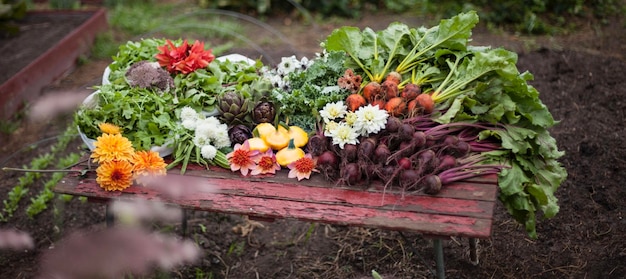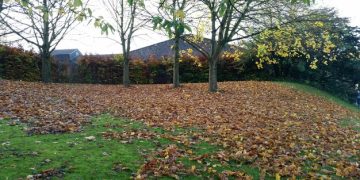USDA Hardiness Zones 2025: How Updates Change Your Planting Strategy

Updated USDA Plant Hardiness Zones for 2023/2024 significantly impact your 2025 planting strategy by providing more precise temperature data, influencing variety selection, planting dates, and overall garden planning to ensure optimal plant survival and growth in your region.
Planning your garden for 2025? Understanding the updated USDA Plant Hardiness Zones is crucial. These zones, revised in 2023/2024, reflect more recent temperature data, providing you with a more accurate picture of what plants will thrive in your area. Let’s explore how updated USDA Hardiness Zones can impact your 2025 planting strategy.
Understanding USDA Hardiness Zones
The USDA Plant Hardiness Zone Map divides North America into 13 zones based on average annual minimum winter temperatures. Each zone is further divided into ‘a’ and ‘b’ sections, offering even more specific guidance. These zones are essential for gardeners and landscapers to determine which plants are most likely to survive the winter in a particular location.
What the Zones Represent
Each zone represents a 10°F (5.6°C) difference in average minimum winter temperature. For example, Zone 6 has an average minimum winter temperature of -10° to 0°F (-23.3° to -17.8°C), while Zone 7 is 0° to 10°F (-17.8° to -12.2°C). Knowing your zone helps you avoid planting species that can’t withstand the coldest temperatures in your area.
Why They Matter for Gardeners
Hardiness zones are a vital tool for selecting plants that can survive winter conditions. Planting within your recommended zone increases the likelihood of long-term plant health and reduces the need for extensive winter protection measures. Consider these benefits:
- Increased plant survival rates.
- Reduced plant loss due to cold damage.
- Better overall plant health and productivity.
Understanding that the recent updates to the USDA Hardiness Zones are based on newer, more granular data, gives gardeners a more reliable tool for planning gardens that are not only beautiful but also hearty enough to get through harsh weather. It’s as simple as checking your location and then selecting only those plants that are known to thrive in the local zone.
Key Changes in the Updated Map (2023/2024)
The updated USDA Plant Hardiness Zone Map, released in 2023/2024, incorporates new data and methodologies, leading to some significant changes. These changes reflect the realities of climate change and can have a direct impact on your planting choices. The map now uses an averaging period from 1991-2020, compared to the 1976-2005 period used in the 2012 map. This shift captures more recent warming trends.
Warmer Zone Shifts
One of the most notable changes is the shift towards warmer zones in many areas. This means that some regions are now classified in a higher hardiness zone than they were in the previous map. Data compiled by Oregon State University’s PRISM Climate Group underlies the map and provides finer resolution. Some areas of the United States have shifted a half-zone warmer. These shifts allow you to consider plants that previously weren’t suitable for your area.
Implications for Planting Choices
With warmer zone shifts, you might be able to grow plants that were previously considered too tender for your region. This opens up opportunities to experiment with a wider variety of species. More specifically, you can now consider:
- Trying new fruit varieties that require slightly warmer climates.
- Extending your growing season by planting earlier in the spring or later in the fall.
- Introducing ornamental plants that add unique visual interest to your garden.
The updated USDA Hardiness Zone Map reflects more accurate and recent temperature data, giving us the opportunity to grow more diverse and beautiful gardens. These shifts are not uniform which means carefully consulting the map is critical when selecting plants for the 2025 planting season.

Adapting Your Plant Selection for 2025
Given the updated hardiness zones, adjusting your plant selection for 2025 is vital. This adaptation involves researching which plants are best suited for your new zone and considering the microclimates within your garden. By taking these factors into account, you can ensure a successful growing season.
Researching Zone-Appropriate Plants
Start by researching plants that are recommended for your specific hardiness zone. Local nurseries, extension services, and online resources can provide valuable information. Don’t only consider plants that will just “survive”, but look for those that will thrive!
Considering Microclimates
Microclimates are small areas within your garden that have different temperature and moisture conditions than the surrounding area. These can be created by walls, fences, trees, or other structures. Gardeners can create diverse, thriving environments by cleverly leveraging microclimates. Factors that define the growing season and create microclimates include:
- Sun exposure: South-facing walls can create warmer microclimates.
- Wind protection: Sheltered areas can protect plants from cold winds.
- Soil drainage: Well-drained soil can prevent root rot in wet conditions.
Selecting plants aligned to the new hardiness zones, as well as leveraging the power of the microclimate, allows gardeners to create the perfect environment for their plants. Understanding microclimates will also mitigate some of the effects of those harsh winters and ensure an even higher rate of survival for those plants residing on the edge – those whose needs hang in the balance.
Adjusting Planting Dates Based on Zone Changes
The shift in hardiness zones can also affect your planting dates. Warmer zones may allow you to start planting earlier in the spring or extend your growing season into the fall. These adjustments can give you a head start on the growing season and enable you to harvest crops for a more extended period.
Earlier Spring Planting
If your area has shifted to a warmer zone, you might be able to start planting cool-season crops like lettuce, spinach, and peas earlier in the spring. Pay attention to long range forecasts and soil temperatures to determine the optimal planting time for your specific location and you may be able to stretch out these growing seasons.
Extending the Fall Harvest
Similarly, warmer zones may allow you to extend your fall harvest by planting late-season crops like kale, Brussels sprouts, and root vegetables. Also, protect sensitive plants with mulch, row covers, or cold frames to extend the harvest season further.

Protecting Plants During Unexpected Cold Snaps
Even with warmer hardiness zones, unexpected cold snaps can still pose a threat to your plants. Implementing strategies to protect plants during these events will help ensure their survival and continued growth. Being ready to respond when temperatures drop suddenly is important.
Using Mulch and Covers
Mulch and covers can provide insulation and protect plants from frost. Apply a thick layer of mulch around the base of your plants to insulate the soil and protect the roots. Use frost blankets or row covers to protect the foliage from freezing temperatures.
Temporary Greenhouses
For more sensitive plants, consider using temporary greenhouses or cold frames. These structures can provide additional protection from the cold and extend the growing season. You can also move container plants inside or to a sheltered location. By taking protective measures, your plants have a much greater chance of surviving those unexpected weather events.
Despite the updated USDA Hardiness Zone Map providing updated and more granular data, temperatures can still fluctuate. Whether it’s from long-term shifts or short-term cold snaps, you can always protect your plants with some preparation strategies. By keeping in touch with the changes and preparing for those shifts accordingly, you can still have a flourishing garden in any climate!
Long-Term Gardening Strategies
In addition to short-term adjustments, consider implementing long-term gardening strategies to adapt to changing climate conditions. These strategies include selecting climate-resilient plant varieties, improving soil health, and conserving water. Climate Resilience means selecting plants that can withstand temperature extremes, drought, and other environmental challenges.
Selecting Climate-Resilient Varieties
Choose plant varieties that are known to be more resilient to climate change. These plants are better able to withstand temperature fluctuations, drought, and other environmental stresses. It might also be helpful to look for:
- Drought-tolerant species that require less water.
- Heat-resistant varieties that can withstand high temperatures.
- Disease-resistant plants that are less susceptible to common garden pests.
Improving Soil Health
Healthy soil is better able to retain moisture, resist erosion, and support plant growth. Improve soil health by adding compost, manure, and other organic matter. Consider these benefits:
- Enhances water retention and drainage.
- Provides essential nutrients for plant growth.
- Suppresses soilborne diseases and pests.
By choosing the best plants and creating the ideal climate, gardeners will be able to do their part to create sustainable and flourishing gardens for years to come. These gardens enrich the land, provide better food sources and help communities to thrive.
| Key Aspect | Brief Description |
|---|---|
| 🌱 Updated Zones | Reflect recent temperature data, influencing plant choices. |
| 📅 Planting Dates | Adjust planting times based on new zone classifications. |
| 🌡️Cold Snaps | Protect plants with mulch, covers, and temporary greenhouses. |
| 🌿 Climate Resilience | Choose plant varieties that withstand environmental challenges. |
Frequently Asked Questions
▼
USDA Plant Hardiness Zones divide North America into 13 zones based on average annual minimum winter temperatures, helping gardeners determine suitable plant species for their region.
▼
Visit the USDA Plant Hardiness Zone Map online and enter your zip code to identify your specific zone. Local extension services can also provide this information.
▼
The hardiness zones changed due to updated temperature data reflecting recent climate trends, leading to adjustments in zone classifications for many regions.
▼
Yes, but it requires careful consideration of microclimates within your garden and providing additional protection, such as mulch or temporary greenhouses, during cold snaps.
▼
Use mulch to insulate the soil, cover plants with frost blankets, and consider temporary greenhouses or cold frames for sensitive species to shield them from freezing temperatures.
Conclusion
Understanding how updated USDA Hardiness Zones can impact your 2025 planting strategy is essential for successful gardening. By adapting your plant selection, adjusting planting dates, and implementing protective measures, you can create a thriving garden that withstands the challenges of changing climate conditions. Stay informed, stay adaptable, and enjoy the rewards of your thoughtful planning.





